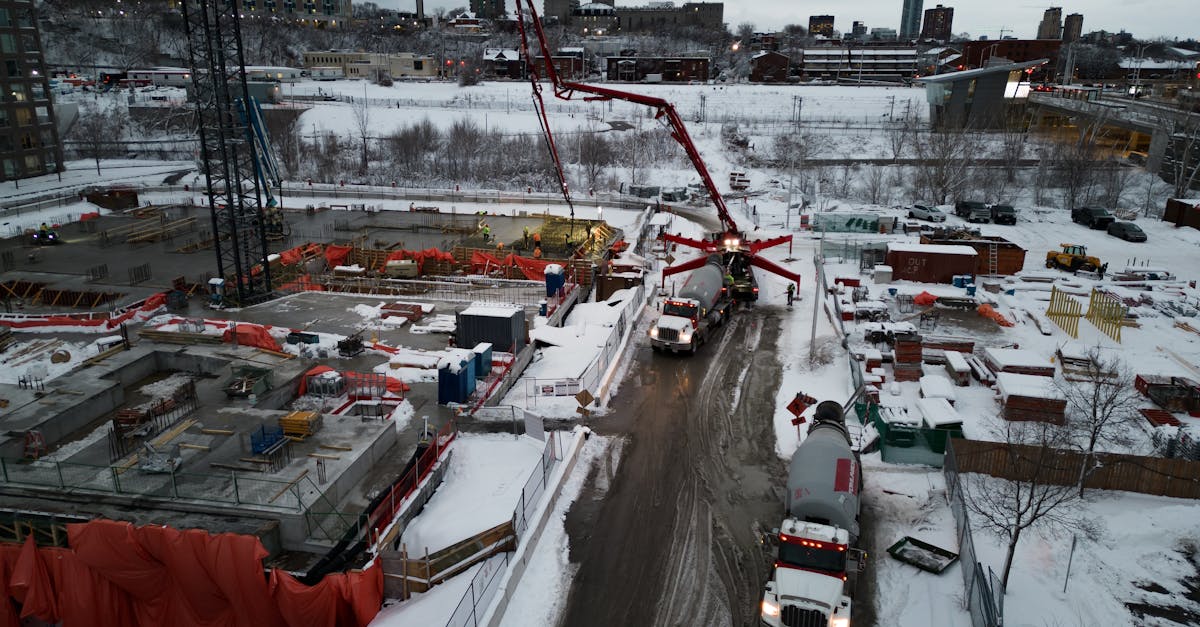
7 Benefits of Using Air Cooled Chillers in Data Centres
Easy Maintenance
Air cooled chillers are designed with user accessibility in mind, which simplifies routine maintenance tasks. Regular checks and servicing can be carried out without significant disruption to operations. With components positioned for easy access, technicians can quickly address any issues that may arise. This reduces downtime and ensures that data centre cooling systems remain efficient.
Moreover, the straightforward design of air cooled chillers often leads to lower maintenance costs over time. Fewer intricate components mean less risk of malfunction and the need for specialised services. Routine tasks such as filter changes or inspections can often be performed by in-house staff, further reducing operational expenses. The overall efficiency gained from easy maintenance contributes to the long-term reliability of the cooling solutions in these critical environments.
Streamlined Service and Upkeep
Air cooled chillers are designed for straightforward maintenance, ensuring minimal disruption to data centre operations. With fewer components needing attention compared to water-cooled systems, technicians can perform inspections and repairs quickly. The accessibility of key parts such as filters and fans allows for routine servicing without extensive downtime, which is crucial for facilities that rely on continuous cooling to protect sensitive IT equipment.
Efficiency in maintenance translates to lower operational costs for data centres. Regular upkeep can often be conducted without the need for specialised teams or extensive training. This simplicity makes it easier for in-house staff to manage routine checks and minor issues, leading to improved reliability and less vulnerability to unexpected system failures. Consequently, facilities can remain confident in their cooling systems without being burdened by excessive upkeep demands.
Flexibility in Installation
The design of air cooled chillers allows for versatile installation options. They can be easily placed on rooftops, parking lots, or even adjacent to buildings, freeing up valuable indoor space. This flexibility simplifies integration with existing infrastructure, accommodating varying spatial constraints and operational requirements.
Different configurations are possible, making it easier to find solutions that suit specific data centre layouts. Whether a facility requires a compact system for tighter environments or larger units for expansive areas, air cooled chillers can meet diverse needs. This adaptability enables data centres to optimise their cooling solutions without compromising efficiency or performance.
Adaptable Solutions for Various Layouts
Air-cooled chillers offer versatile installation options that accommodate different data centre configurations. Their compact designs enable placement in limited spaces, allowing for effective cooling without compromising valuable real estate. These systems can be positioned on rooftops, near external walls, or in dedicated cooling zones, providing maximum flexibility to fit a variety of building layouts.
The adaptability of these chillers extends to their ability to pair with existing infrastructure seamlessly. Data centres with unique room shapes or arrangements can integrate air-cooled chillers without significant modifications to current operations. This ease of integration not only simplifies the installation process but also minimises downtime, making them an attractive solution for facility managers aiming to enhance cooling efficiency.
Scalability
Data centres often face the challenge of evolving demands, making scalability a critical factor in their operational success. Air-cooled chillers are designed to accommodate a range of cooling needs, allowing operators to expand their systems as required. This flexibility enables facilities to manage increases in server loads and accommodate growth without the need for major overhauls or investments in entirely new systems.
In addition to responding to immediate operational demands, air-cooled chillers support future planning. As technology continues to advance and businesses expand, the infrastructure must adapt accordingly. These chillers can be scaled up by adding additional units or enhancing existing ones, ensuring that the cooling solution remains efficient and effective over time, thus safeguarding against potential disruptions in service and operational inefficiencies.
Supporting Future Growth and Expansion
Air-cooled chillers offer considerable advantages for data centres looking to expand or upgrade their operations. Their modular designs allow for easier integration into existing systems, enabling facilities to add more capacity as needed without significant alterations to the infrastructure. This adaptability can therefore minimise downtime during expansion, a critical element for businesses relying heavily on constant uptime.
Implementing air-cooled chillers also supports energy efficiency, an essential factor for future growth. As data demands rise, the need for efficient cooling solutions becomes even more crucial. Advanced technology in these chillers allows them to operate effectively under varying loads, ensuring that as a data centre scales up, energy consumption remains optimised and costs stay manageable.
FAQS
What are air cooled chillers?
Air cooled chillers are refrigeration systems that use air to cool and condense refrigerants, typically used in data centres to manage heat generated by servers and other equipment.
How do air cooled chillers benefit data centre maintenance?
Air cooled chillers require less maintenance compared to water cooled systems since they do not need extensive plumbing and water treatment, making service and upkeep more streamlined.
Can air cooled chillers be installed in various data centre layouts?
Yes, air cooled chillers are highly flexible in installation and can be adapted to fit a range of data centre layouts, allowing for efficient cooling solutions tailored to specific requirements.
What does scalability mean in the context of air cooled chillers?
Scalability refers to the ability of air cooled chillers to support future growth and expansion of data centres by allowing for easy addition of cooling capacity as demands increase.
Are air cooled chillers energy efficient?
Yes, many modern air cooled chillers are designed to be energy efficient, helping to reduce operating costs and environmental impact while still providing effective cooling for data centres.
Related Links
Historical Overview of Chiller Technology in Data CentresWhy Are Air Cooled Chillers Essential for Data Centre Operations
Roundup of Top Innovations in Air Cooled Chillers for Data Centres
Review of the Best Air Cooled Chillers for Data Centre Applications
Why You Should Consider Upgrading to Modern Air Cooled Chillers in Data Centres
What to Consider When Implementing Air Cooled Chillers in Data Centres
What to Expect from Air Cooled Chiller Performance in Data Centres